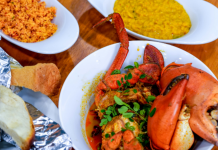2016 Sep 22
by Shamila Naleer
Of all the animals that call this luscious land home, the elephant is , perhaps, one of the most majestic and awed creatures to roam the sands of Sri Lanka. Any person who has studied, or even brushed the surface of Lankan history would be able to recall tales and lessons that included elephants as being the King’s ride, because of all the majesty and symbolism of greatness that elephants brought with them to the show.
However, elephant rides have not only been restricted to the past where Kings journeyed near and far on the backs of these giants. Nowadays, various locations in Lanka as well as all over the world do have elephant rides, with one elephant carrying approximately five people. Yes, you may argue that elephants are after all massive animals, and probably do not even feel the weight of five humans on them, but at the end of the day, you are not that elephant.
I still remember, as a child, when I used to go on holiday with my family, a few handpicked locations down south would usually feature elephant rides. Like any other kid, with childish fantasies and likes, seeing elephants never failed to intrigue me, mostly because of their might and size. I still remember how I cried and begged my parents to take me on a elephant ride because countless other people would climb on these giants, and the elephant’s captivator would pull the elephant with a chain, leading it to walk up and down a short distance on the beach. But looking back at the ancient videotape of my sibling and I on that elephant now, do I recall that gigantic rusted cuff locked on the ankles of that elephant. Only now do I remember how big and heavy that chain looked. Only now do I see that look of despair and fatigue in that animal’s eye.

Lanka’s traditions and culture have always stood out in the world because of its diversity as well as its uniqueness. The colors, the food, the beaches and the beauty of The Pearl have indefinitely attracted tourists far and wide. One of the most prestigious pageants that take place in Sri Lanka is the Kandy Esala Perahera. With all its bright colors and grandeur, citizens, young and old, dance to cultural Sri Lankan tunes and steady drumming, sing of old tales and folklore and play with fire. One of the biggest stars of the show is, of course, the elephants. Draped in beautifully decorated cloth from head to trunk to toe, these elephants move with the parade and carry lavishly costumed officials and the casket containing the Tooth relic. One also does not fail to notice the shackles and chains on these creatures. Fun fact; Esala also signifies man’s strength and velour in having conquered and tamed the wild elephant.

Nonetheless, elephants breaking lose and disrupting the celebrations is not unheard of, and it is personally why I am terrified to witness an actual Perahera. Many argue that the heat, excessive noise and the extreme bustle push these animals little by little over the edge, possibly infuriating them and causing to rage through the gathered crowds. Numerous Facebook pages, websites and online petitions have been scattered on the internet, with the intent of putting the use of elephants for such purposes to a substantial halt.
The other issue is the daily deaths of the elephants in the nation. In the last decade, over 670 humans have been killed as a result of elephant-human clashes. The number of jumbos who lost their lives? Almost 1500. Let that sink in. Deforestation for human settlements and cropping, leads to the loss and increased fragmentation of the elephant habitat in Sri Lanka. Per annum, nearly 120 wild elephants are killed by people in order to protect their crops and houses and also to hunt for ivory.

On a journey to the past, let some history be made known. When the English ruled, Sri Lanka lost an outrageous percentage of her elephant population; Major Thomas Rogers, infamously known as “1400 & lost count”, had mercilessly killed over 1400 jumbos including more than 60 tuskers. He murdered at least one elephant a day, until he was killed by a stroke of lightning. If that wasn’t bad enough, the same era witnessed, Major Thomas Skinner and Captain Galway gun down over 600 and 700 jumbos respectively for their sporting pleasure. This is how elephants were appreciated.
Another brilliant case; The Dehiwala Zoo. Mixed up in a controversy where the end of the zoo has been demanded, elephants there don’t live fondly either. The suffering, as opinionated by some, has not only been restricted to elephants, but to all animals enclosed in the unsuitable premise. Elephants have been subjected to entertain the zoo visitors in a method deemed miserable.

Today, September 22, is Elephant Appreciation Day, but it should not just be restricted to one day. These gentle giants are endangered and certain elephant species have also been declared extinct. As Lankans, it is our duty to protect these animals and as humans, it is our responsibility to be humane. It is what sets us apart.






